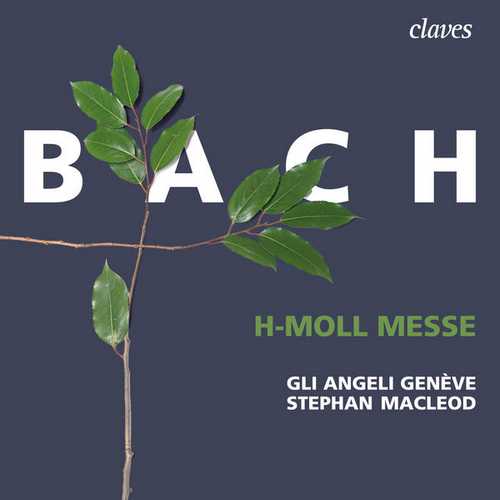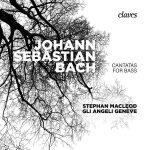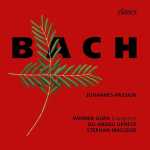

Composer: Johann Sebastian Bach
Performer: Gli Angeli Genève, Aleksandra Lewandowska, Zoë Brookshaw, Marianne Beate Kielland, Valerio Contaldo, Alex Potter, Anne-Kathryn Olsen, Christelle Monney, Olivier Coiffet, Jaromir Nosek
Conductor: Stephan Macleod
Number of Discs: 2
Format: FLAC (tracks)
Label: Claves
Catalogue: CD301415
Release: 2021
Size: 1.78 GB
Recovery: +3%
Scan: yes
Mass in B minor, BWV232
CD 01
01. I. Kyrie eleison
02. II. Christe eleison
03. III. Kyrie eleison
04. IVa. Gloria in excelsis
05. IVb. Et in terra pax
06. V. Laudamus te
07. VI. Gratias agimus tibi
08. VIIa. Domine Deus
09. VIIb. Qui tollis peccata mundi
10. VIII. Qui sedes ad dextram Patris
11. IXa. Quoniam tu solus sanctus
12. IXb. Cum Sancto Spiritu
CD 02
01. X. Credo in unum Deum
02. XI. Patrem omnipotentem
03. XII. Et in unum Dominum
04. XIII. Et incarnatus est
05. XIV. Crucifixus
06. XV. Et resurrexit
07. XVI. Et in Spiritum sanctum Dominum
08. XVIIa. Confiteor
09. XVIIb. Et expecto
10. XVIIIa. Sanctus
11. XVIIIb. Pleni sunt coeli
12. XIX. Osanna in excelsis
13. XX. Benedictus
14. XXI. Osanna in excelsis
15. XXII. Agnus Dei
16. XXIII. Dona nobis pacem
For years now, musicology and musicians have been addressing the question of the vocal forces that Johann Sebastian Bach had at his disposal for his cantatas and passions. With the help of occasionally newly discovered sources and in-depth studies, we have been able to find enlightening answers to a problem that is essential for the interpretation of his music.
From its creation in 2005, Gli Angeli Genève has approached Bach’s music with two singers per part: i. e. eight singers for most of the cantatas, eight singers for the St John Passion, sixteen for the St Matthew Passion and its two choirs (as our recording published by Claves in April 2020 shows), ten for the Magnificat (where the choirs have five parts) or for the Mass in B minor (where a complement of twelve singers would be more logical because of the six-part Sanctus). Two singers per part in the choirs is the number of singers in Carl Philip Emmanuel Bach’s choir for many of his great oratorios, and the number of singers in Joseph Haydn’s choir for many of his masses. But here again, these historical realities are not the basis of our approach and choice. A musician may be justified in his need to legitimize his aesthetic choices by his knowledge of history, but if the search for authenticity becomes the sole driving force behind his work, he may go astray. It is therefore another factor that attracts and motivates us.



